Off-Road Exploring in the Alabama Hills Near Lone Pine, California
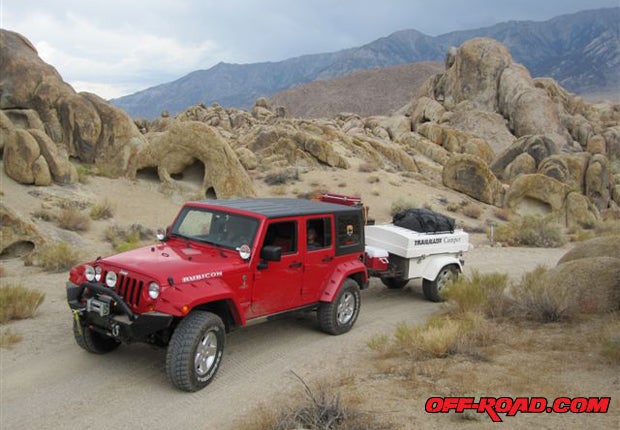
In California, this string of pearls lies along the eastern slope of the Sierra Nevada, and touches on or goes through some prime wheeling areas. Check out a road map of California and you’ll see what I mean. Names such as Ridgecrest, Bishop, Bodie, Lee Vining, and Susanville entice you to turn your steering wheel in their direction. In this article, I’m using the Alabama Hills as an example of what you’ll find along the route of US 395.
Just west of Lone Pine, California, and US 395, a string of rocky hills enjoy a secure toe-hold to the foothills of Mt. Whitney (the highest mountain in the contiguous 48 states). If you’re a movie buff, you must see these awe-inspiring, beautiful, rock-encrusted slopes clinging to the Sierra Nevada. The Alabama Hills offer an eerie boulder-strewn landscape that’s almost other-worldly; big boulders piled upon bigger boulders; balancing acts rarely seen; and thousands of caves and cubby-holes for kids to play hide-‘n’-seek in. It may not be number one on my top-10 list of natural wonders to see, but it’s firmly ensconced on the list.
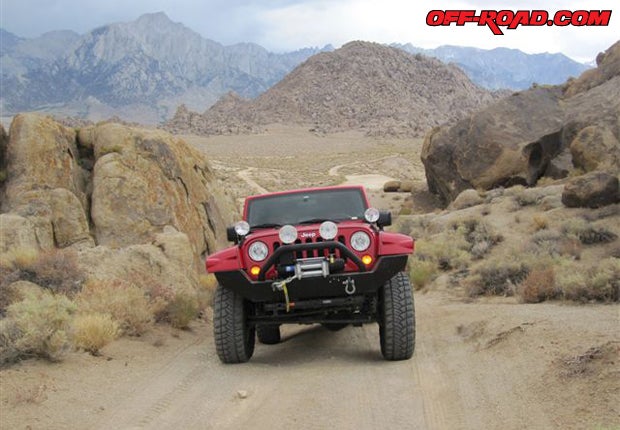
For 90 years, the Alabama Hills have starred in hundreds of films, thousands of TV commercials, and uncountable TV programs. From Fatty Arbuckle to Mel Gibson, from Cary Grant to Jody Foster, Gunga Din, Brett Maverick, Linus Rawlings, and Captain Kirk have all called the Alabama Hills and nearby Lone Pine, California, home for a short time. Even Tarzan left the jungles of the Culver City back lots to film a couple movies in the Alabama Hills.
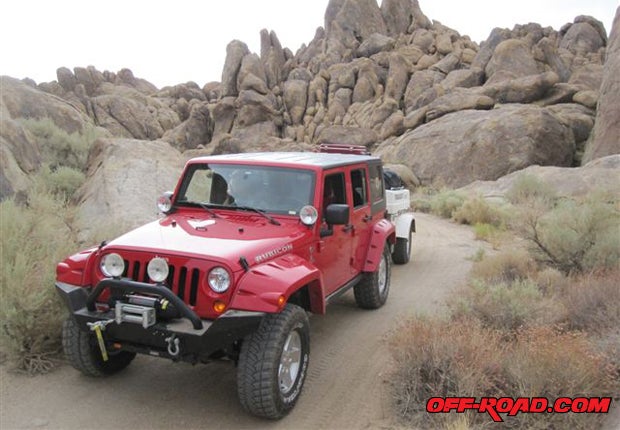
Driving along Movie Road—a two-lane dirt road that takes off from Whitney Portal Road and parallels US 395 between the Sierra Nevada and the Alabama Hills—is a case of continuous déjà vu. You can get a first-hand look at the real shooting locations of a great many motion pictures filmed in the beautiful Alabama Hills. Even first timers in the area swear they’ve seen it before, and every turn in the road brings another familiar scene to view. That has to be because of the countless feet of film on which the hills have appeared, much of which we’ve all seen over time.
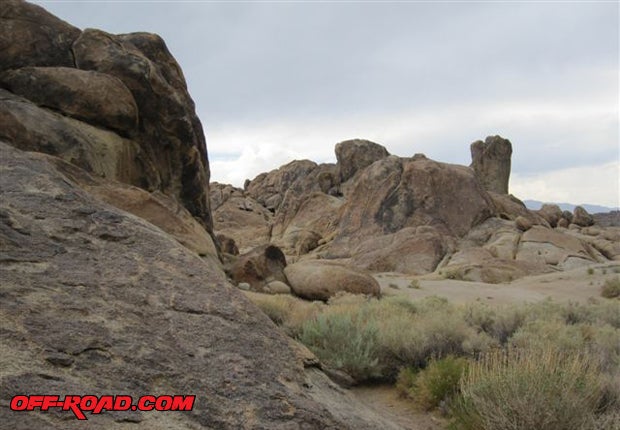
Although there are many campsites in the Alabama Hills—easily accessed by RVs—you’ll discover some of the most scenic dry camps in California. You can find Movie Road by heading west out of Lone Pine on Whitney Portal Road. Turn north at the movie monument plaque. Find a wide, flat spot back in the hills along Movie Road, set up your campfire (you’ll have to bring your own firewood), and lean back to enjoy the snow-capped Sierra Nevada to the west, the White Mountains across the Owens Valley, or the rocks of the Alabama Hills. Like making shapes out of clouds when you were a kid, there are so many differently shaped rocks and boulders on the hills, you can imagine them as goblins, horses, fortresses, or just about anything else under the sun.
The Alabama Hills might be the main attraction, but there are any number of short subjects in the area to visit. The first place to visit would be the Museum of Lone Pine Film History (http://www.lonepinefilmhistorymuseum.org/, 701 South Main Street, Lone Pine, CA 93545; (760) 876-9909). Explore the museum’s collection of movie costumes, movie cars, props, posters, and other memorabilia. This collection tells the story of filming in the area in and around Lone Pine from the early days to the modern blockbusters of today such as Iron Man. Make sure you download the BLM’s Movie Road Self Guided Tour booklet when you visit the museum’s website. It’ll make your visit much more enjoyable.
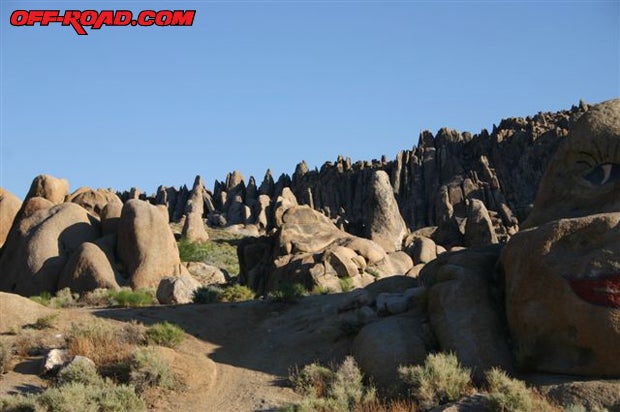
When you’re scheduling your trip to the area, consider attending Lone Pine’s film festival. For 2010, it’ll be held on October 8, 9, and 10. For other years, consult the museum’s website.
You can also continue west up Whitney Portal Road to the trailhead for the hiking trails on Mt. Whitney. This is an endeavor only for those of you who are fit enough. We’re talking some very high altitude here, folks! If you climb high enough on this road, you can even see down into Death Valley to the east beyond the White Mountains.
US 395, the highway that doubles as Lone Pine’s main street, is an interesting piece of macadam in itself. It connects both US borders—Baja California, Mexico, to British Columbia, Canada—and flows through three states along the eastern slopes of the various coastal mountain ranges (many years ago I published a story in Trailer Life on US 395). It’s a highway well worth following.
Taking US 395 north a few miles out of Lone Pine, you’ll find the Manzanar monument. Take a moment to walk around this black eye on America’s face of history. Here was one of the internment camps that housed Japanese-Americans during World War II. It was truly an ugly camp in a beautiful location.
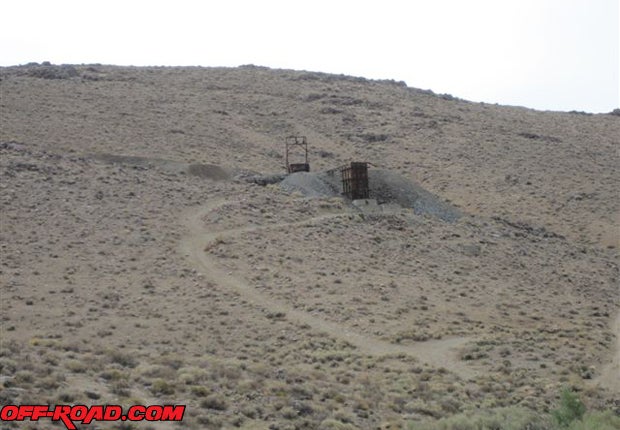
If you decide to try the area in the spring for wild flowers—instead of October for the film festival—drive a few more miles further north on US 395 to Bishop. Every year, Bishop hosts Mule Days over Memorial Day weekend (last weekend in May). There are mule races, a big parade featuring mules, cowboy camp-in, mule rodeo, and fireworks by the city fire department.
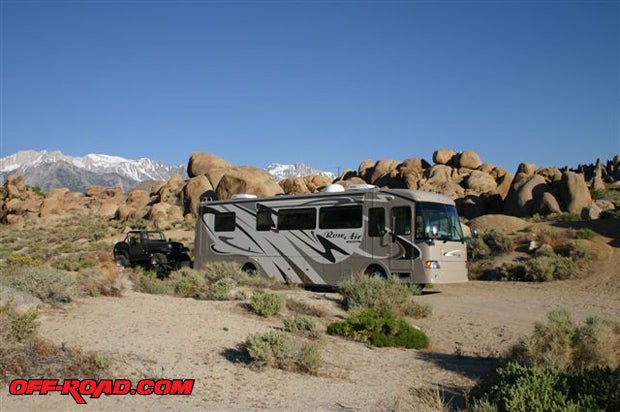
In the 1930s, the Owens Valley was ravaged by the Los Angeles water department when they built the first aqueduct to haul water from the Sierras to thirsty Los Angeles. Departmental employees dynamited beaver dams, decimated lakes, and almost turned the Owens Valley into a dust bowl. Fortunately, the US government stepped in several decades ago in order to save the valley. Although it has never recovered its glory of the Roaring Twenties, Owens Valley has recovered nicely and is now wet enough to support quite a mosquito population (bring plenty of repellant).
Using Lone Pine and the Alabama Hills as a base, plan on spending at least three or four days exploring the wheeling wonders of the Owens Valley and the surrounding sights.


 Your Privacy Choices
Your Privacy Choices